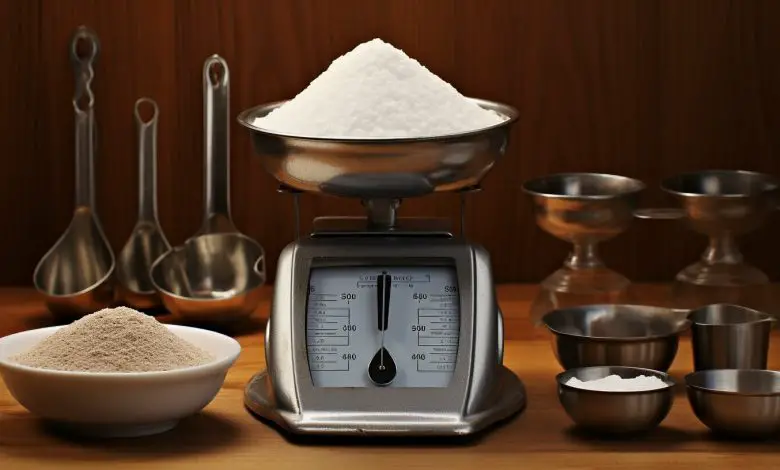Quick Guide: How Many Ounces in a Pound (oz in lb)?

Are you curious about how many ounces are in a pound? In this quick guide, we will explore the conversion between pounds and ounces, providing valuable information for cooking, weight management, and more.
A pound is equal to 16 ounces. Ounces are commonly used in cooking and recipes to measure ingredients. The imperial system, which includes pounds and ounces, is commonly used in the United States. To convert ounces to pounds, divide the number of ounces by 16. To convert pounds to ounces, multiply the number of pounds by 16.
There are various types of pounds, including the avoirdupois pound used for everyday items and commodities. The troy pound is used for precious metals, and the apothecaries’ pound is used in pharmacy and medicine.
Understanding the difference between ounces and pounds is important in cooking and for accurate measurements. Whether you’re following a recipe or managing your weight, knowing how to convert between pounds and ounces can make a significant difference. To help you with this, we have included an ounces in a pound chart for easy reference.
Stay tuned as we delve deeper into the concept of pounds and ounces, explore different types of pounds, and emphasize the importance of accurate measurements in cooking.
Understanding Pounds and Ounces
Before we dive into the details of converting pounds to ounces and vice versa, let’s take a closer look at the relationship between pounds and ounces and explore some handy conversion methods.
A pound is equal to 16 ounces in the imperial system, which is commonly used in the United States. Ounces are frequently used in cooking and recipes to measure ingredients accurately. To convert ounces to pounds, you can divide the number of ounces by 16. On the other hand, to convert pounds to ounces, simply multiply the number of pounds by 16. This ratio between pounds and ounces is crucial to understand when dealing with measurements in everyday life and in the culinary world.
It’s worth noting that there are different types of pounds that have specific applications. The avoirdupois pound is widely used for everyday items and commodities, while the troy pound is used specifically for weighing precious metals. Additionally, the apothecaries’ pound is utilized in pharmacy and medicine. Being aware of these variations can be important if you encounter them in your daily life or profession.
Conversion Methods for Pounds to Ounces
There are several methods you can use to convert pounds to ounces, depending on your preference and the tools available to you. One straightforward way is to use a pound to ounce calculator, which provides instant and accurate conversions. Additionally, you can use a simple formula to convert pounds to ounces: multiply the number of pounds by 16. For example, if you have 4 pounds, the calculation would be 4 x 16 = 64 ounces. Having these conversion methods at your disposal makes it easy to switch between pounds and ounces efficiently.
| Pounds (lb) | Ounces (oz) |
|---|---|
| 1 | 16 |
| 2 | 32 |
| 3 | 48 |
Now that we have explored the relationship between pounds and ounces, as well as some handy conversion methods, you are equipped with the knowledge to confidently navigate measurements in both everyday life and the culinary world. Understanding the difference between ounces and pounds is key to accurate measurements and successful cooking adventures. So the next time you need to convert pounds to ounces or vice versa, remember the simple ratio and convenient conversion methods.
Types of Pounds
Did you know that there are various types of pounds, each serving different purposes? In this section, we will explore the avoirdupois pound, troy pound, and apothecaries’ pound, along with a handy pound and ounce conversion chart.
The avoirdupois pound, also known as the “everyday pound,” is the most commonly used pound measurement in the United States. It is used to measure everyday items and commodities such as groceries, household items, and personal belongings. One avoirdupois pound is equal to 16 avoirdupois ounces. This pound is widely used in cooking and recipes to measure ingredients, ensuring accurate measurements for successful culinary endeavors.
The troy pound, on the other hand, is primarily used in the measurement of precious metals. It is commonly used in the jewelry industry and for trading gold, silver, and other valuable metals. Unlike the avoirdupois pound, the troy pound consists of 12 troy ounces. It is important to note that when dealing with precious metals, the troy pound and troy ounce are used for more precise measurements.
Another type of pound is the apothecaries’ pound, which is specifically used in pharmacy and medicine. The apothecaries’ pound is equivalent to 12 apothecaries’ ounces, and it is used to measure medications and pharmaceutical ingredients. This pound ensures accurate dosages and proper formulation in the field of pharmacy, where precision is crucial.
Pound and Ounce Conversion Chart
For your convenience, here is a pound and ounce conversion chart:
| Pounds | Ounces |
|---|---|
| 1 | 16 |
| 2 | 32 |
| 3 | 48 |
Understanding the different types of pounds and their applications is essential, whether you are cooking, working with precious metals, or involved in the pharmaceutical industry. By familiarizing yourself with these pound measurements and utilizing the pound and ounce conversion chart, you can ensure accurate measurements and achieve the desired results in your endeavors.
Importance of Understanding Ounces and Pounds in Cooking
When it comes to cooking, precise measurements can make all the difference. In this section, we will discuss why it’s crucial to understand the relationship between ounces and pounds in cooking, and we’ll introduce an ounces in a pound chart to simplify your culinary adventures.
In the world of cooking, accurate measurements are essential for achieving the desired taste and texture in your dishes. Whether you are following a recipe or experimenting with your own creations, knowing how many ounces are in a pound and vice versa is key to achieving culinary perfection.
By understanding the conversion between ounces and pounds, you can accurately measure ingredients and ensure that the flavors in your dishes are perfectly balanced. Whether it’s adding the right amount of flour to your cake batter or measuring out the correct amount of meat for a savory stew, precise measurements will help you achieve consistent and delicious results every time.
To make things easier for you in the kitchen, we have created an ounces in a pound chart that you can refer to whenever you need to convert between ounces and pounds. This chart provides a quick and handy reference, allowing you to effortlessly convert measurements and avoid any guesswork in your cooking. With this chart by your side, you can confidently navigate the world of cooking measurements and create culinary masterpieces with precision.
FAQ
How many ounces are in a pound?
There are 16 ounces in a pound.
Why are ounces commonly used in cooking and recipes?
Ounces are commonly used in cooking and recipes to measure ingredients with precision.
How do I convert ounces to pounds?
To convert ounces to pounds, divide the number of ounces by 16.
How do I convert pounds to ounces?
To convert pounds to ounces, multiply the number of pounds by 16.
What are the different types of pounds?
The avoirdupois pound is used for everyday items, the troy pound is used for precious metals, and the apothecaries’ pound is used in pharmacy and medicine.
Why is it important to understand the difference between ounces and pounds in cooking?
Understanding the difference between ounces and pounds is important in cooking for accurate measurements and successful culinary endeavors.








